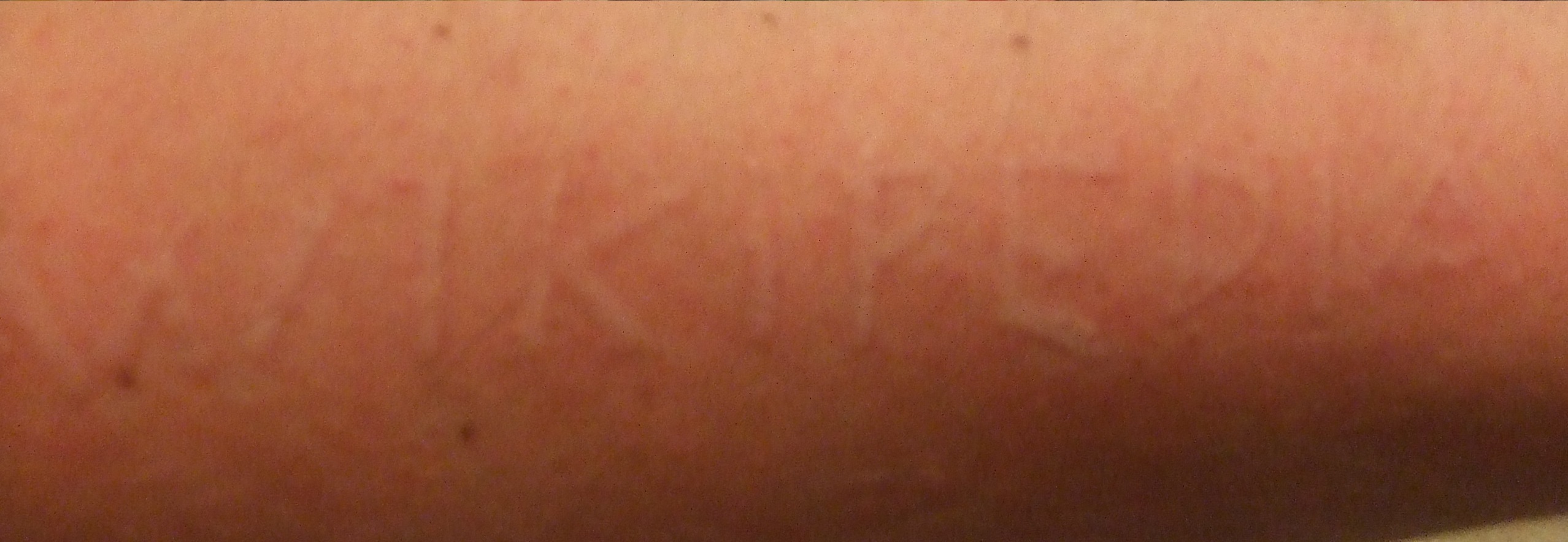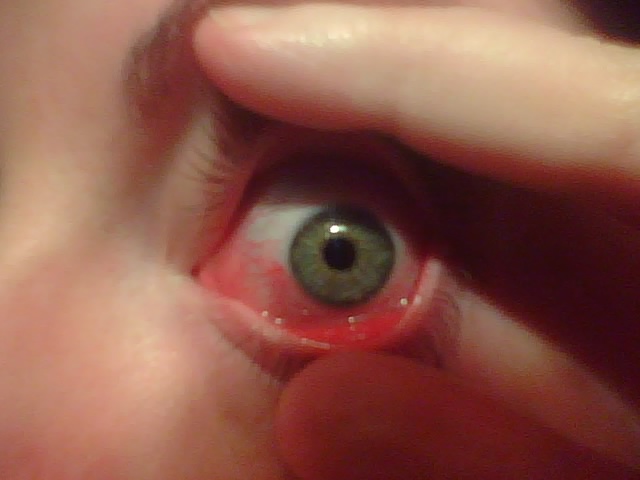|
Cromoglycate
Cromoglicic acid (INN)—also referred to as cromolyn (USAN), cromoglycate (former BAN), or cromoglicate—is traditionally described as a mast cell stabilizer, and is commonly marketed as the sodium salt sodium cromoglicate or cromolyn sodium. This drug prevents the release of inflammatory chemicals such as histamine from mast cells. Cromoglicic acid has been the non-corticosteroid treatment of choice in the treatment of asthma, for which it has largely been replaced by leukotriene receptor antagonists because of their convenience (and perceived safety). Cromoglicic acid requires administration four times daily, and does not provide additive benefit in combination with inhaled corticosteroids. History Cromolyn sodium was discovered in 1965 by Roger Altounyan, a pharmacologist who had asthma. It is considered a breakthrough drug in management of asthma, as the patients can be freed from steroids in many cases; however, it is mainly effective as a prophylaxis for allergic and e ... [...More Info...] [...Related Items...] OR: [Wikipedia] [Google] [Baidu] |
Allergic Rhinitis
Allergic rhinitis, of which the seasonal type is called hay fever, is a type of inflammation in the nose that occurs when the immune system overreacts to allergens in the air. Signs and symptoms include a runny or stuffy nose, sneezing, red, itchy, and watery eyes, and swelling around the eyes. The fluid from the nose is usually clear. Symptom onset is often within minutes following allergen exposure, and can affect sleep and the ability to work or study. Some people may develop symptoms only during specific times of the year, often as a result of pollen exposure. Many people with allergic rhinitis also have asthma, allergic conjunctivitis, or atopic dermatitis. Allergic rhinitis is typically triggered by environmental allergens such as pollen, pet hair, dust, or mold. Inherited genetics and environmental exposures contribute to the development of allergies. Growing up on a farm and having multiple siblings decreases this risk. The underlying mechanism involves IgE antibodies ... [...More Info...] [...Related Items...] OR: [Wikipedia] [Google] [Baidu] |
Capsaicin
Capsaicin (8-methyl-''N''-vanillyl-6-nonenamide) ( or ) is an active component of chili peppers, which are plants belonging to the genus ''Capsicum''. It is a chemical irritant for mammals, including humans, and produces a sensation of burning in any tissue with which it comes into contact. Capsaicin and several related alkaloids are called capsaicinoids and are produced as secondary metabolites by chili peppers, probably as deterrents against certain mammals and fungi.What Made Chili Peppers So Spicy? Talk of the Nation, 15 August 2008. Pure capsaicin is a , colorless, highly |
C Fibers
Group C nerve fibers are one of three classes of nerve fiber in the central nervous system (CNS) and peripheral nervous system (PNS). The C group fibers are unmyelinated and have a small diameter and low conduction velocity, whereas Groups A and B are myelinated. Group C fibers include postganglionic fibers in the autonomic nervous system (ANS), and nerve fibers at the dorsal roots (IV fiber). These fibers carry sensory information. Damage or injury to nerve fibers causes neuropathic pain. Capsaicin activates C fibre vanilloid receptors, giving chili peppers a hot sensation. Structure and anatomy Location C fibers are one class of nerve fiber found in the nerves of the somatic sensory system. They are afferent fibers, conveying input signals from the periphery to the central nervous system. Structure C fibers are unmyelinated unlike most other fibers in the nervous system. This lack of myelination is the cause of their slow conduction velocity, which is on the order of ... [...More Info...] [...Related Items...] OR: [Wikipedia] [Google] [Baidu] |
Mechanism Of Action
In pharmacology, the term mechanism of action (MOA) refers to the specific biochemical interaction through which a drug substance produces its pharmacological effect. A mechanism of action usually includes mention of the specific molecular targets to which the drug binds, such as an enzyme or receptor. Receptor sites have specific affinities for drugs based on the chemical structure of the drug, as well as the specific action that occurs there. Drugs that do not bind to receptors produce their corresponding therapeutic effect by simply interacting with chemical or physical properties in the body. Common examples of drugs that work in this way are antacids and laxatives. In contrast, a mode of action (MoA) describes functional or anatomical changes, at the cellular level, resulting from the exposure of a living organism to a substance. Importance Elucidating the mechanism of action of novel drugs and medications is important for several reasons: * In the case of anti-infectiv ... [...More Info...] [...Related Items...] OR: [Wikipedia] [Google] [Baidu] |
Nedocromil
Nedocromil sodium is a medication considered as mast cell stabilizer which acts to prevent wheezing, shortness of breath, and other breathing problems caused by asthma. It is administered by an inhaler under the brand name Tilade, and as an eye drop under the brand name Alocril. The effects of nedocromil versus asthma are gradual rather than fast-acting and it is not indicated for acute respiratory distress compared to fast acting bronchodilators like albuterol or other well-known inhaler medications. Liquid preparations of nedocromil are available in the UK under the name Rapitil for use for allergic eye reactions. Nedocromil sodium has been shown to be effective in alleviating symptoms of allergic conjunctivitis. Nedocromil is classified as a benzopyrone. Nedocromil acts as a mast cell stabilizer, inhibits the degranulation of mast cells, prevents release of histamine and tryptase, so preventing the synthesis of prostaglandins and leukotrienes. US Production of inhaled nedocro ... [...More Info...] [...Related Items...] OR: [Wikipedia] [Google] [Baidu] |
Zambon
Zambon is an Italian company that has been operating in the pharmaceutical and fine chemical industry since 1906. The company is currently run by Elena Zambon who is the daughter of the founder.{{Cite news, url=http://www.repubblica.it/economia/affari-e-finanza/2017/07/03/news/credito_e_industria_il_nord-est_volta_pagina_i_nuovi_signori_della_locomotiva_italiana-169825826/?refresh_ce, title=Credito e industria, il Nord-Est volta pagina: i nuovi signori della locomotiva italiana, date=2017-07-03, work=Repubblica.it, access-date=2018-08-08, language=it Headquartered in Bresso, in the Province of Milan, the company has business operations in three continents: Europe, South America and Asia. The company employs approximately 2,600 people in 15 countries and its integrated organisation consists of Zambon Company SpA, the industrial holding company for the group which comprises Zach System (fine chemicals), Zambon SpA (pharmaceuticals) and Z-Cube (Research Venture). History Origins Ga ... [...More Info...] [...Related Items...] OR: [Wikipedia] [Google] [Baidu] |
Ulcerative Colitis
Ulcerative colitis (UC) is a long-term condition that results in inflammation and ulcers of the colon and rectum. The primary symptoms of active disease are abdominal pain and diarrhea mixed with blood (hematochezia). Weight loss, fever, and anemia may also occur. Often, symptoms come on slowly and can range from mild to severe. Symptoms typically occur intermittently with periods of no symptoms between flares. Complications may include abnormal dilation of the colon (megacolon), inflammation of the eye, joints, or liver, and colon cancer. The cause of UC is unknown. Theories involve immune system dysfunction, genetics, changes in the normal gut bacteria, and environmental factors. Rates tend to be higher in the developed world with some proposing this to be the result of less exposure to intestinal infections, or to a Western diet and lifestyle. The removal of the appendix at an early age may be protective. Diagnosis is typically by colonoscopy with tissue biopsies. It is ... [...More Info...] [...Related Items...] OR: [Wikipedia] [Google] [Baidu] |
Dermatographic Urticaria
Dermatographic urticaria is a skin disorder and one of the most common types of urticaria, affecting 2–5% of the population. Signs and symptoms The condition manifests as an allergic-like reaction, causing a warm red wheal to appear on the skin. As it is often the result of scratches, involving contact with other materials, it can be confused with an allergic reaction, when in fact it is the act of being scratched that causes a wheal to appear. These wheals are a subset of urticaria (hives), and appear within minutes, in some cases accompanied by itching. The first outbreak of urticaria can lead to other reactions on body parts not directly stimulated, scraped, or scratched. In a normal case, the swelling will decrease without treatment within 15–30 minutes, but, in extreme cases, itchy red welts may last anywhere from a few hours to days. Causes Symptoms are thought to be the result of histamine being released by mast cells on the surface of the skin. Despite the lack of a ... [...More Info...] [...Related Items...] OR: [Wikipedia] [Google] [Baidu] |
Mast Cell Activation Syndrome
Mast cell activation syndrome (MCAS) is a type of mast cell activation disorder (MCAD), and is an immunological condition in which mast cells inappropriately and excessively release chemical mediators, resulting in a range of chronic symptoms, sometimes including anaphylaxis or near-anaphylaxis attacks. Primary symptoms include cardiovascular, dermatological, gastrointestinal, neurological and respiratory problems. Multiple diagnostic schemes for MCAS have been proposed, and the condition is increasingly over-diagnosed or misdiagnosed. Signs and symptoms MCAS is a condition that affects multiple systems, generally in an inflammatory manner. Symptoms typically wax and wane over time, varying in severity and duration. Many signs and symptoms are the same as those for mastocytosis, because both conditions result in too many mediators released by mast cells. It has many overlapping characteristics with recurrent idiopathic anaphylaxis, although there are distinguishing symptoms, ... [...More Info...] [...Related Items...] OR: [Wikipedia] [Google] [Baidu] |
Mastocytosis
Mastocytosis, a type of mast cell disease, is a rare disorder affecting both children and adults caused by the accumulation of functionally defective mast cells (also called ''mastocytes'') and CD34+ mast cell precursors. People affected by mastocytosis are susceptible to a variety of symptoms, including itching, hives, and anaphylactic shock, caused by the release of histamine and other pro-inflammatory substances from mast cells. Signs and symptoms When mast cells undergo degranulation, the substances that are released can cause a number of symptoms that can vary over time and can range in intensity from mild to severe. Because mast cells play a role in allergic reactions, the symptoms of mastocytosis often are similar to the symptoms of an allergic reaction. They may include, but are not limited to * Fatigue * Skin lesions (''urticaria pigmentosa''), itching, and dermatographic ''urticaria'' (skin writing) * "Darier's Sign", a reaction to stroking or scratching of urticar ... [...More Info...] [...Related Items...] OR: [Wikipedia] [Google] [Baidu] |
Allergic Conjunctivitis
Allergic conjunctivitis (AC) is inflammation of the conjunctiva (the membrane covering the white part of the eye) due to allergy. Although allergens differ among patients, the most common cause is hay fever. Symptoms consist of redness (mainly due to vasodilation of the peripheral small blood vessels), edema (swelling) of the conjunctiva, itching, and increased lacrimation (production of tears). If this is combined with rhinitis, the condition is termed allergic rhinoconjunctivitis (ARC). The symptoms are due to release of histamine and other active substances by mast cells, which stimulate dilation of blood vessels, irritate nerve endings, and increase secretion of tears. Treatment of allergic conjunctivitis is by avoiding the allergen (''e.g.'', avoiding grass in bloom during "hay fever season") and treatment with antihistamines, either topical (in the form of eye drops), or systemic (in the form of tablets). Antihistamines, medications that stabilize mast cells, and nonsteroida ... [...More Info...] [...Related Items...] OR: [Wikipedia] [Google] [Baidu] |





